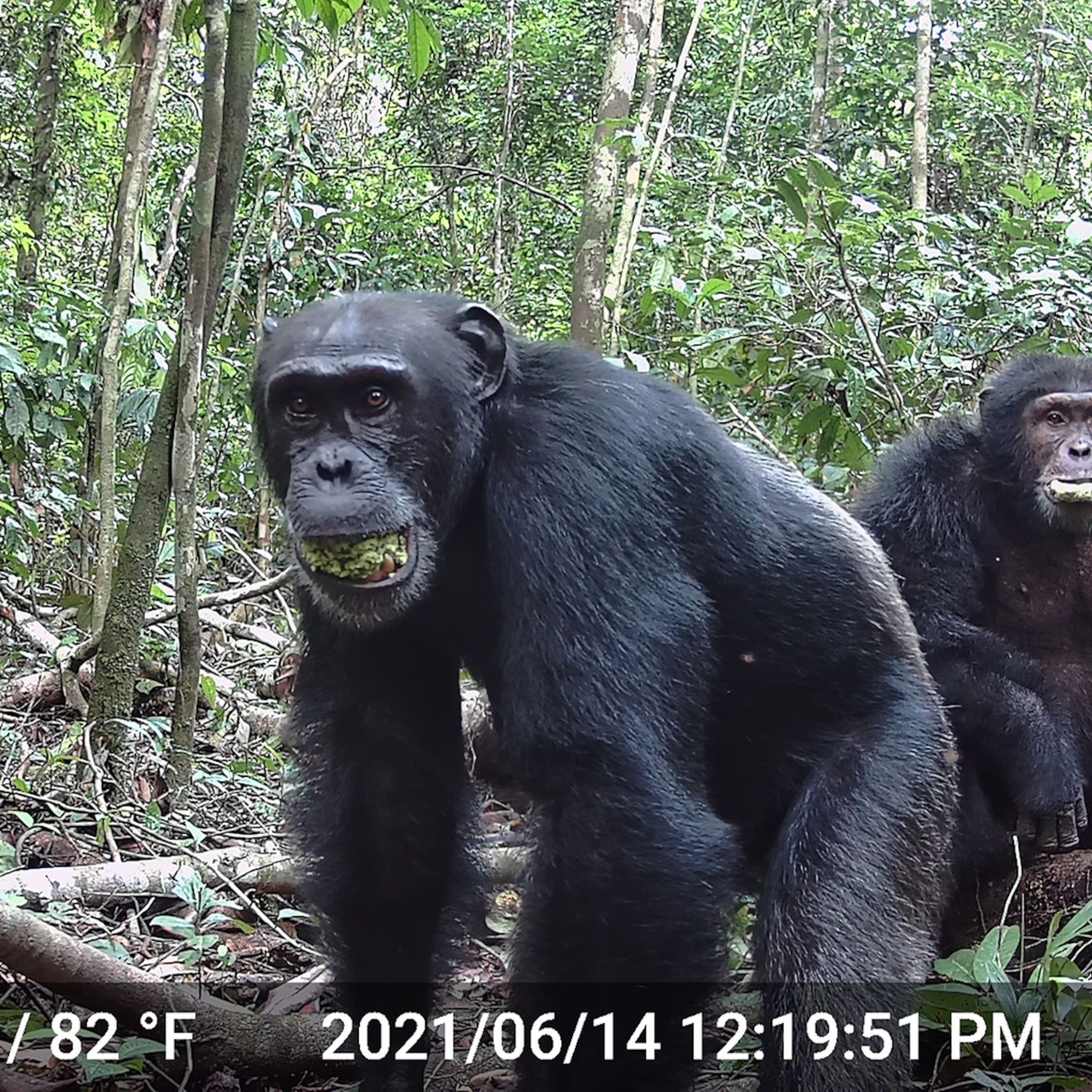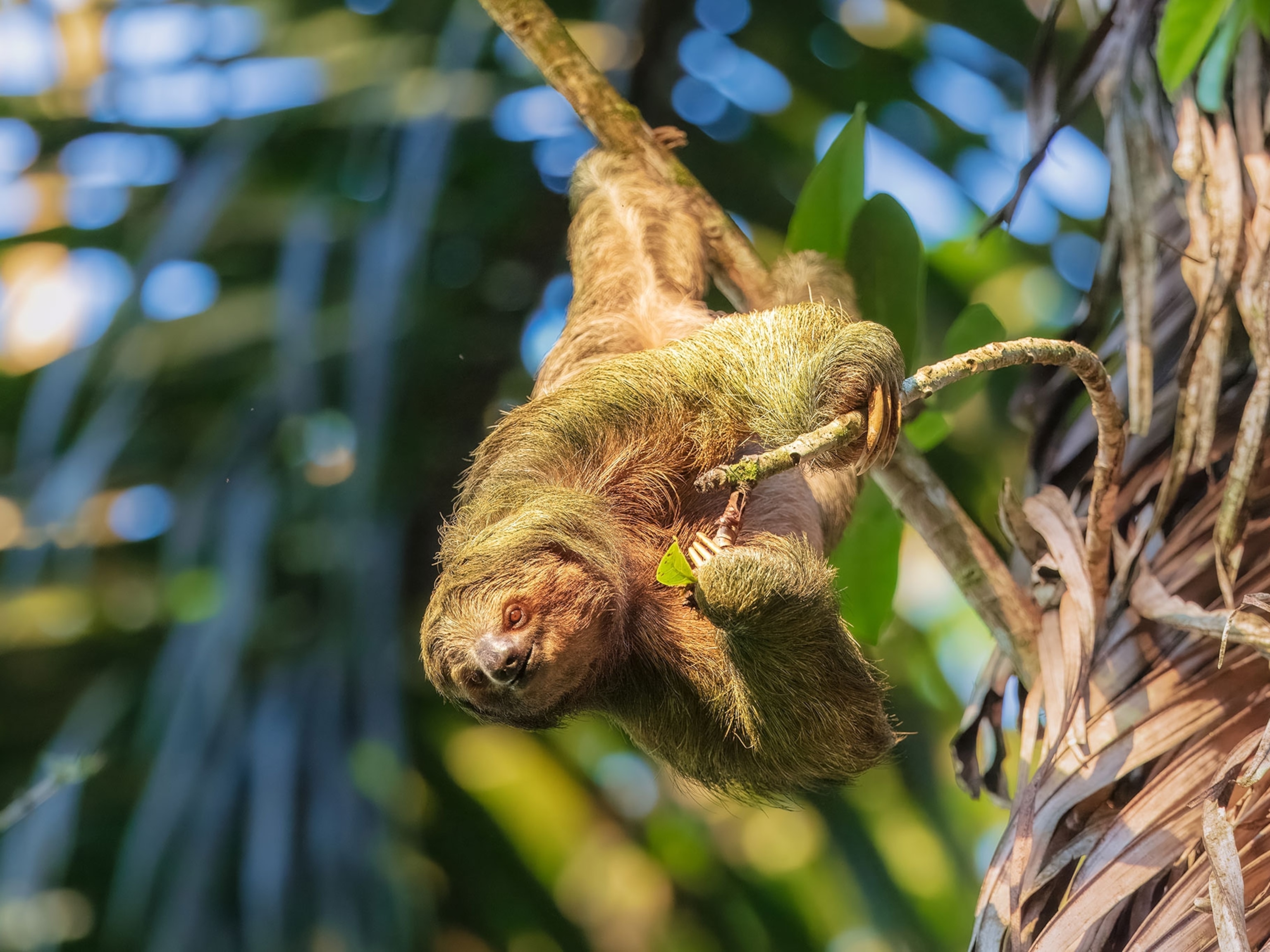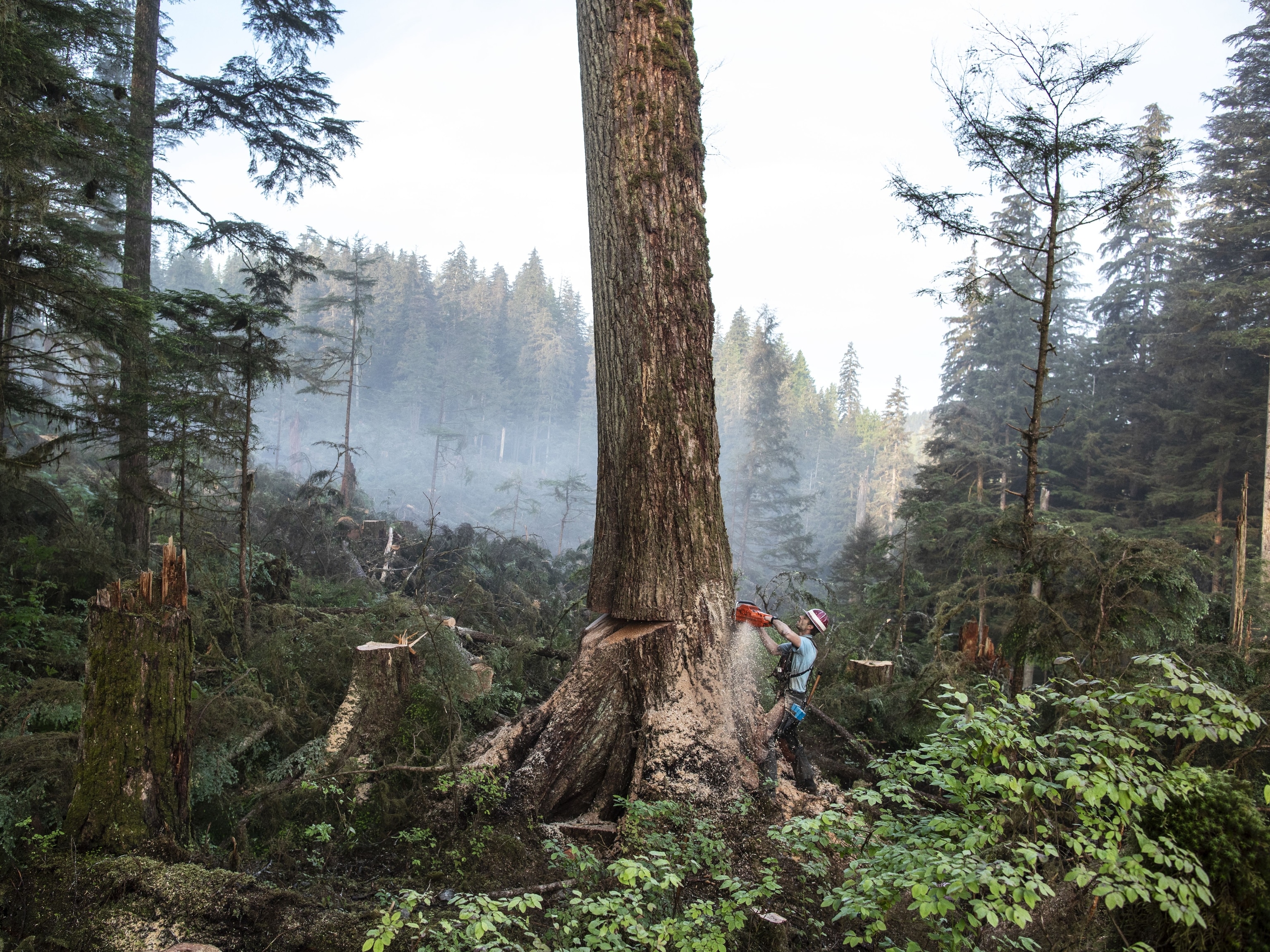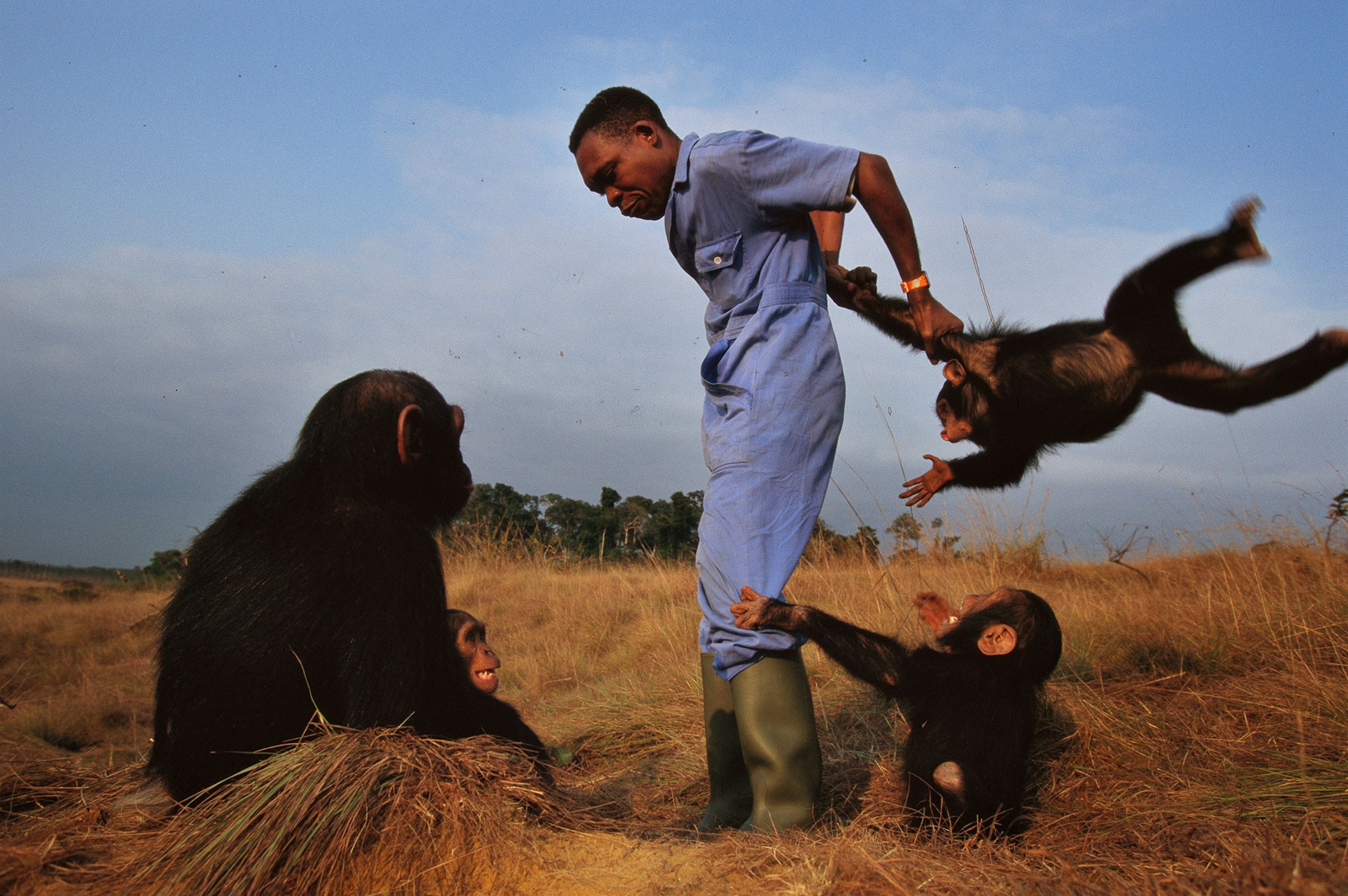
Why Chimps Are Disappearing and How to Save Them
Challenges facing our close relatives, says the author of a new book, include deforestation, unchecked population growth, and the pet trade.
Author and conservationist Nancy Merrick first fell under the spell of chimpanzees in the 1970s, when she worked at Jane Goodall’s legendary Gombe Stream Research Center. Charmed by their intelligence and sensitivity, she went on to have a distinguished career at Stanford University founding ChimpSaver.org, an interactive website that helps users contribute to chimp conservation.
In 2008, she took her children back to Africa to discover that forests had been destroyed and the number of chimps had shrunk dramatically. Her new book, Among Chimpanzees: Field Notes From The Race To Save Our Endangered Relatives, is both a clarion call for action and a tender evocation of the emotional lives of man’s closest relative.
Talking from her home in Ventura, California, she recalls how it was to work with Jane Goodall; explains why intelligent design is wrong about chimps; and why it is crucial for us to protect the Congo Basin for future generations.
You took your children to Africa in 2008 and begin your book with that experience. Tell us about Ngamba Island and what happens there.
Ngamba Island Chimpanzee Sanctuary is currently home to 48 orphan chimps rescued by wildlife authorities after they were taken from their mothers to be sold into the pet trade. These are the lucky chimps. There are countless others that aren’t so fortunate. They need a place to survive for the rest of their lives because, for the most part, chimps cannot be put back into the wild having been removed in this way.
Anyone who sees a group of chimps and sees their intelligence, their relationships with one another, cannot help but see how much they have in common with us.Nancy Merrick
This wonderful sanctuary is going to provide a home for these chimpanzees for the rest of their lives, which are likely to be anywhere from 35 to 50 years long. It also allows people like my family and me to go there, see chimpanzees up close and personal, and interact with their Ugandan caregivers.
It’s a much more personal experience than going to an ecotourism site. I took my family there to ensure they’d get to see chimps and learn about them before we went back to Gombe where I had worked previously and where we were less sure of how many chimps we’d actually get to see.

You describe a marvelous experience of walking the chimps in the morning on Ngamba Island. Tell us about that.
They used to offer what was called the Forest Walk. It has recently been dropped because it became apparent that it was having deleterious effects on the chimps. But it was an amazing experience to spend an hour in the forest with a small group of young chimps, sitting down periodically to play or to groom with them. We were always prohibited from even thinking about doing those kinds of things at Gombe. [Laughs] So it was fun for once to break the rules and feel what it is like to be part of a grooming session or to play with a chimp.
You did your fieldwork with Jane Goodall in the 70s. What is it about chimpanzees that drew you to your research?
Chimpanzees are so like us in so many ways. We share more than 98 percent of our genetic material with them, so it’s really not a surprise that we so often see our behavior reflected in theirs. They are so intelligent. They feel many complex emotions exactly as we do. When you look at them, their expressions are so much like ours. They are fascinating creatures. I have thought that since the first National Geographic special I saw in high school featuring Jane [Goodall] and the chimpanzees. I hadn’t imagined there were creatures as intelligent as they are until that moment.
Give us the skinny on what it was like to work under Jane Goodall.
It was like a fairy tale to be going out and studying chimps, walking 15 feet behind them for as many hours as you could keep up. On the other hand, there was a certain schizophrenia about it because you were also experiencing Africa, the poverty and myriad issues that affect the human population there.
We were a small community of Africans and European students, mostly grad students and a group of undergraduates like me, who were from Stanford University. Every night, we would jockey to get to tell her what we’d seen.
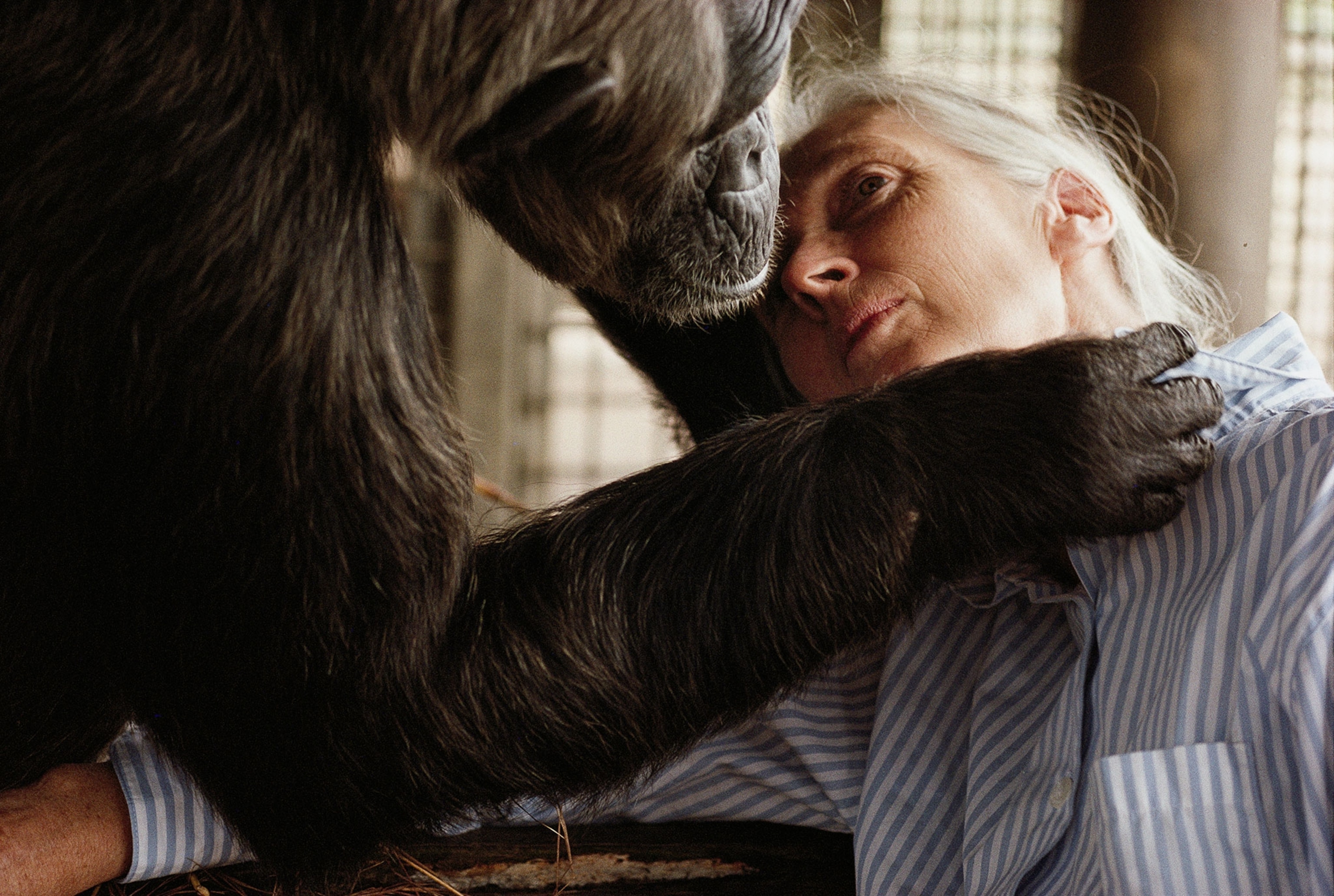
We all thought we had made some important discovery that had never been heard of before. She would laugh and very gently try to let us know, well, no, she had seen that a number of times and she could always remember who had first observed that particular behavior and how many times it had since been recounted! She reaches out to all of her students and even to people who write letters. She’s incredible that way.
You returned to Africa in 2008 to discover huge changes had taken place in the lives of chimps. Give us a snapshot of that shift.
In 1972, there were millions of chimpanzees living in forests full of fruit trees, their staple diet, well away from human presence. By 2008, the chimp population had dropped to somewhere between 150,000 to 300,000 chimps. Things had changed dramatically.
There are so many challenges. It’s essential that the Congo Basin forests are protected because that’s where the last reservoirs of chimps and gorillas reside.Nancy Merrick
That was evident when we got on the water taxi heading toward Gombe Stream National Park. The hills were denuded of vegetation. Where once there had been small fishing camps along the edges of the park, villages had sprung up that were home to hundreds of people. The air was filled with smoke. I’ll never forget it because it reminded me of a forest fire I witnessed in California—the smell in the air from the ash.
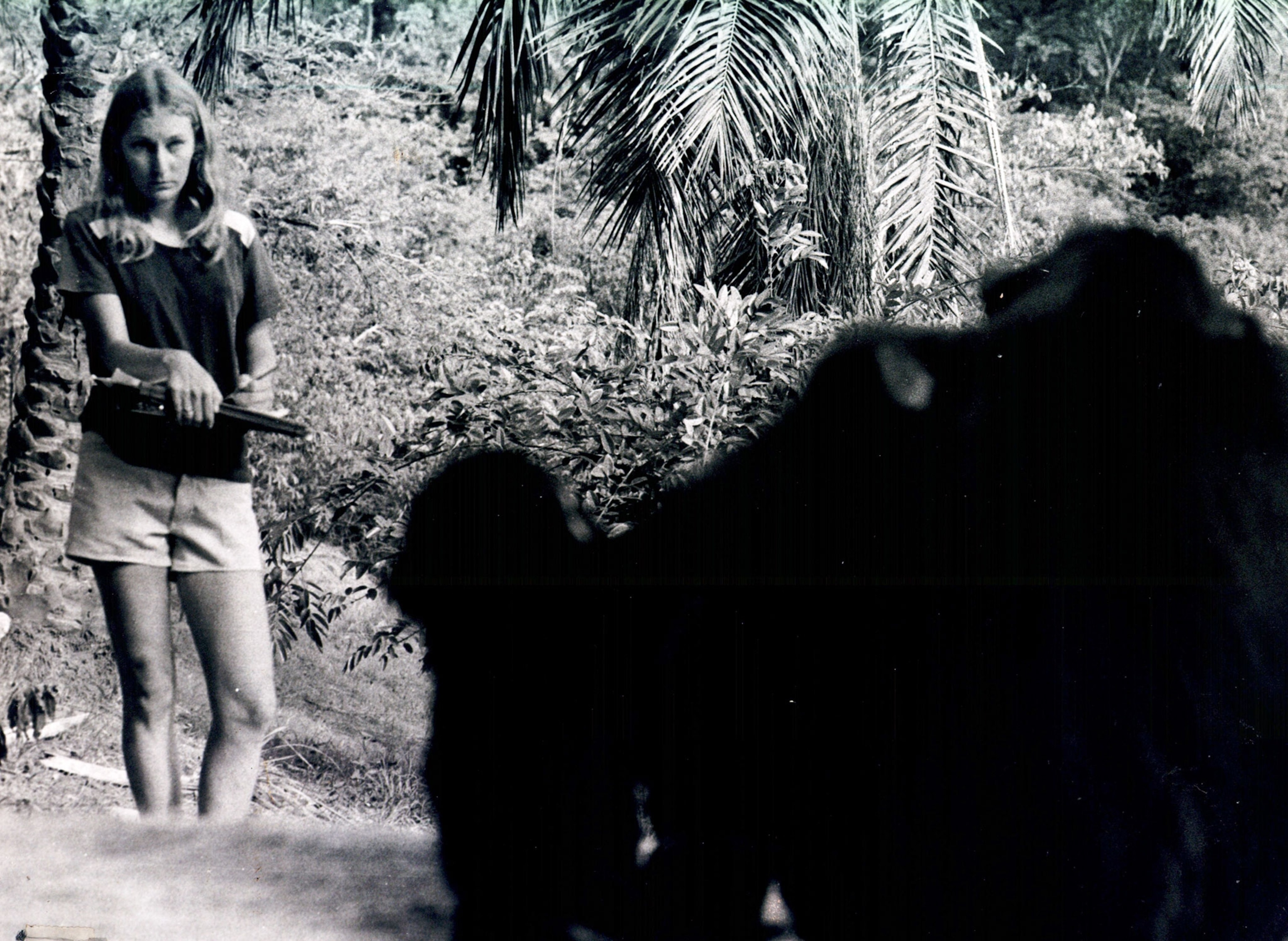
You write that relationships among chimps are important and that they stay with their mothers until they reach sexual maturity, around 10 to 12 years old. Tell us about how chimps relate to and even adopt each other.
Chimps have big hearts and very tight family bonds. I was studying mother and infant chimps so I got a good sense of this. When a mother was lost, or passed away, it was not uncommon that a sister would become the adoptive mother to any children that she had left behind.
My first ‘follow’ at Gombe was of a very famous chimp Jane described, named Flint. His mother, Flo, had died two weeks previously. Flint was about eight or nine years old, the equivalent of a young teenager in human life.
He was devastated by her passing. He would lie in the stream bed where she had collapsed a couple of weeks previously and went for days without eating or moving from that site. It was striking to see a chimp dying of grief at the passing of his mother. It was my first experience of how complex the emotional lives of chimpanzees are.

In the past decade there has been an upswing in a theory called intelligent design that basically rejects Darwin’s Origin of Species. Talk to us about human perception of chimps and how that theory might endanger chimps and apes.
[Laughs] It’s hard to answer this one because it’s so hard for me to imagine people could believe otherwise. Anyone who sees a group of chimps and sees their intelligence, their relationships with one another, cannot help but see how much they have in common with us.
Whatever your opinion is of evolution or intelligent design, it doesn’t matter. Experience a chimp. You don’t have to believe they’re our genetic relatives to realize that these are important beings on the planet that are worth saving.
Chimps and gorillas are both critically endangered species. What are the biggest environmental challenges facing them and how can they be saved?
There are so many challenges. It’s essential that the Congo Basin forests are protected because that’s where the last reservoirs of chimps and gorillas reside. The biggest challenge is unchecked population growth. We’re a planet of about seven billion. By 2050 we will have added about two billion more, many of them to the continent of Africa, which is probably the continent least able to accommodate such an increase.
We need to create a groundswell of interest in saving biodiversity if we’re going to save man’s closest relatives.Nancy Merrick
We’re already seeing that where chimps and gorillas live near human habitats their forests are being rapidly converted to agriculture. Dr. Matt McLennan, of Oxford Brookes University has been studying a group of chimps in Uganda. Over a period of about 10 years he saw nearly complete conversion of forests to agriculture. And a group of chimps that numbered about 30 to 35 in 2008 had been reduced to only 20 individuals.
Add to that the risk from bush meat, the illegal pet trade and illegal timber activity. We have a lot of work to do to ensure that we protect these forests adequately.
You say that even cell phones are contributing to their endangerment, but we certainly aren’t going to give up our cell phones. What can our readers do to help our nearest relative?
The first thing is to learn more about the situation. Chimpanzees are messengers for the broader issues of deforestation in the Congo basin, and the issues of poverty that affect so many Africans. A good way to learn more is to sign up for a free newsfeed like the Great Ape Daily or Like the Facebook page for Chimp Saver Support organizations with great track records protecting chimps, great apes and forests, such as The Jane Goodall Institute or the World Wildlife Fund. We need to create a groundswell of interest in saving biodiversity if we’re going to save man’s closest relatives.
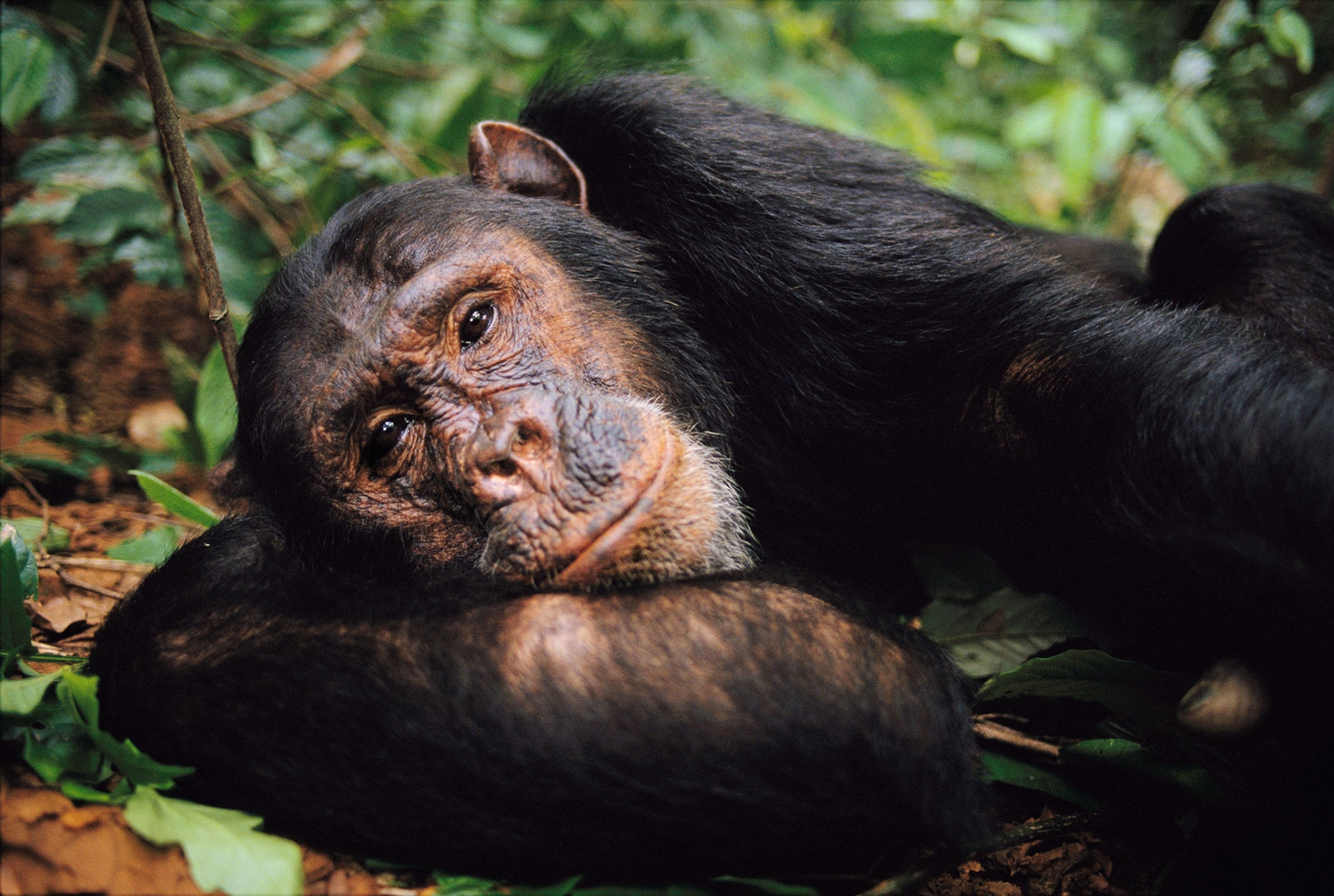
We also have to consume a lot less. Cell phones are a great example. Coltan, (http://conflictminerals.org/coltan-learning-the-basics/) which is used for the capacitors in our cell phones, has traditionally come from the Democratic Republic of Congo, and there has been a lot of illegal militia activity related to the mining and selling of this product. It’s important that we recycle these devices and that we realize that every time we get a new cell phone it has a very real impact on forests around the planet.
One of the most ingenious initiatives in Africa is the Great Apes Film Initiative. Tell us about that.
The Great Ape Film Initiative is terrific! They are trying to provide information to Africans who live near these critical forests, so they can better appreciate why it’s important to spare them and care about great apes.
They do free screenings and develop some beautiful films, translate them into local languages and show them to local people to educate them about the issues. That’s so important. Every program we have to conserve great apes has to focus on people whose lives are directly impacted every day because they live next to these critical forests.
If they want to show a film somewhere where’s no electricity to run the projector, they’ve devised a bicycle that can be used to generate electricity. Pedal-powered cinema! [Laughs]
How has working with chimps changed your life?
They really touch your heart, and if you get the opportunity to work with them you feel an obligation to try to be a voice for them. They suffer a lot at the hands of human beings, both in captivity and in the wild.
Chimps are now extinct in four African countries and severely threatened in ten others. But I don’t think people have any inkling of what fascinating and complex creatures they are. So I feel it’s incumbent on us to educate people so that we have at least a chance of saving them.
Follow Simon Worrall on Twitter or at simonworrallauthor.com.
